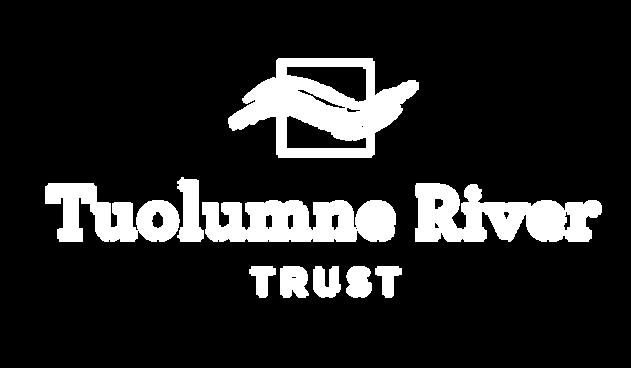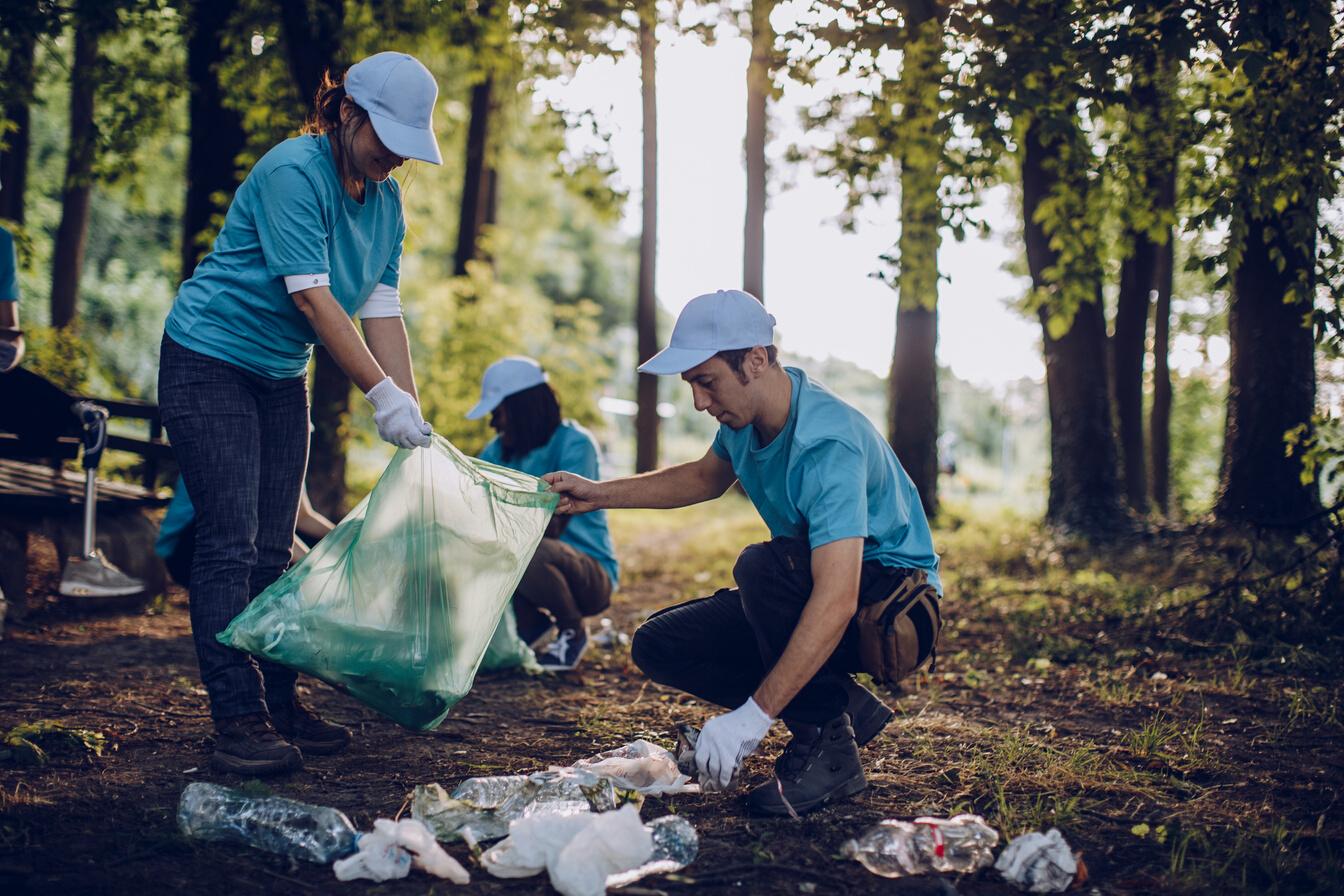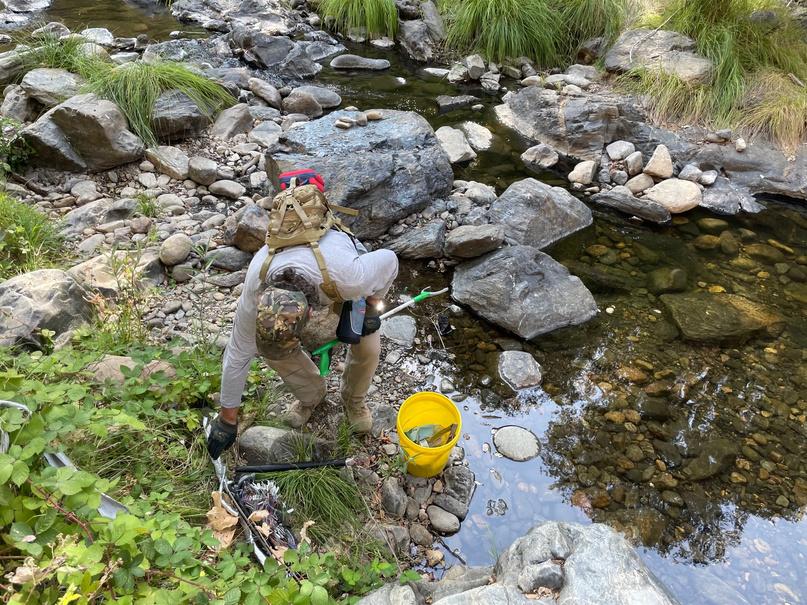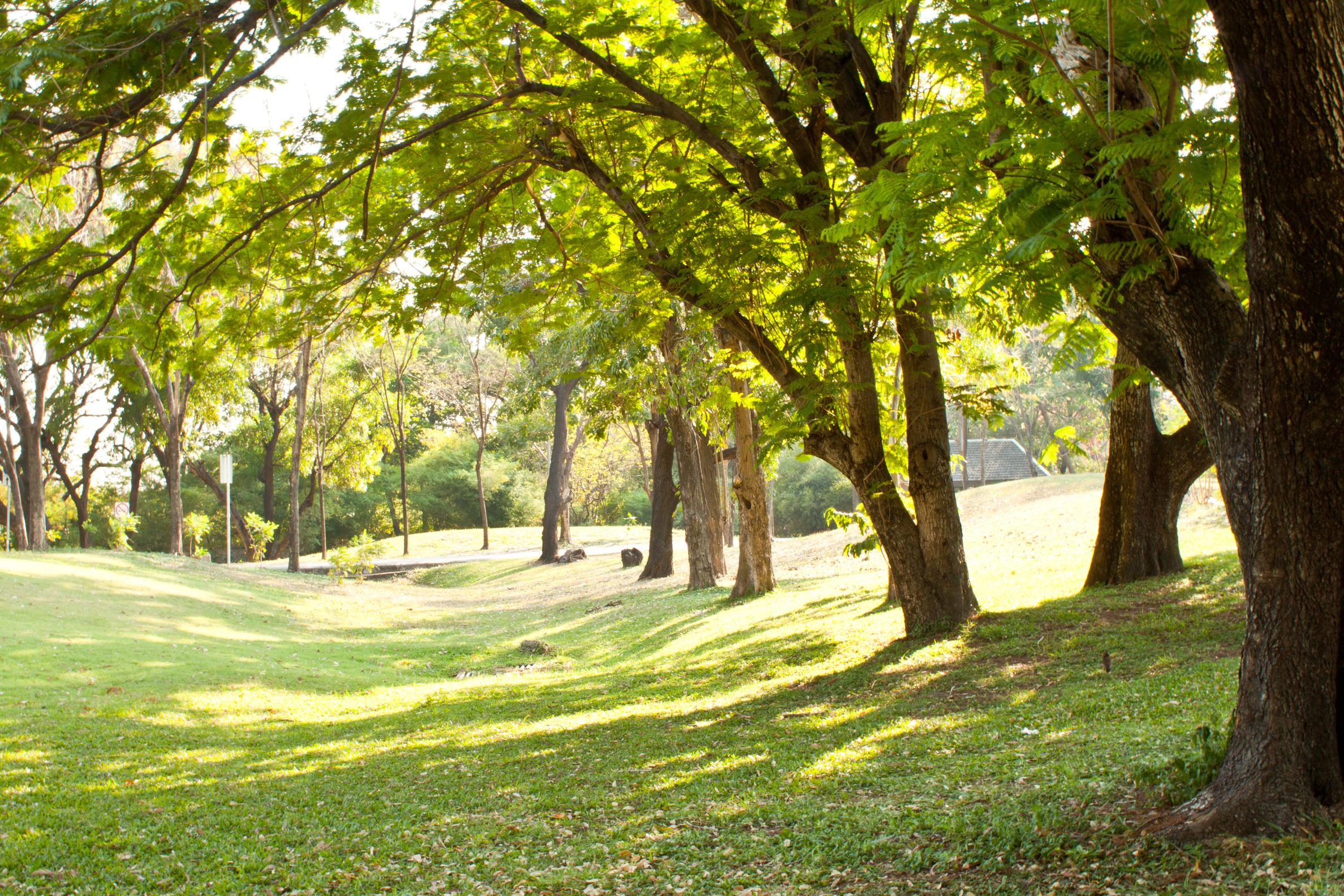Protecting and restoring the Tuolumne River watershed for present and future generations.

Giving Day is 11/29/22. All gifts will be matched dollar-for dollar!
Learn more about how we are making a BIG IMPACT by protecting the Tuolumne.
YOU ARE INVITED TO JOIN THE MOVEMENT




2
LETTERFROMTHEED
Patrick Koepele, Executive Director
Since 1981, the Tuolumne River Trust has been working to improve the river's health From our inaugural campaign to protect the river from a dam proposal, which resulted in Federal protection from the river through the Wild & Scenic Rivers Act, through today, where we work in three different regions on a wide array of different initiates, TRT continues to make a big impact on the future of the Tuolumne, ensuring the river remains as an invaluable resource for people, fish, and wildlife.
We have worked tirelessly to ensure that the river is a vibrant and health place where people can find enjoyment and solace in nature, encounter an abundance of fish and wildlife, and access clean and healthy water.

Pressures on the river, and indeed natural places across the State and Country, continue to mount. There is an ever greater demand for outdoor spaces, clean water, and abundant fish and wildlife Meanwhile, our climate is warm causing more extreme weather and further stressing the river
Our Modesto-based team has partnered with All Children Thrive to reduce barriers to the riverside parks, making them safer and more inviting places to spend time We are now seeing a transformation of the riverfront with a heavily used biking and hiking trail extending from downtown to the west side of Modesto and local stewards cleaning up the shores
Meanwhile, we are advancing two exciting projects that will improve salmon habitat along the lower river by providing a better floodplain and spawning habitat.
Both of the projects will ultimately create improved parks for the local communities We have seen a number of victories as we work to improve flows in the river for fish and wildlife. The State Water Board approved an objective of higher flows, and Federal Courts have affirmed the State’s authority to issue flow requirements through the new license for Don Pedro Dam Although so called “voluntary agreements” between the irrigation districts and the State continue to distract and slow progress toward meaningful improvements in water management, we remain optimistic as we maintain pressure for action.
In the headwaters, working in collaboration with many key partners, we are leading forest restoration efforts that are serving as a model for other communities throughout the State We have been reforesting thousands of acres of land burned intensely by the Rim Fire, while also thinning out overgrown stands so that good fire can once again burn safely without erupting into an extreme megafire.
We look forward to continuing all this amazing work and improving on it over the next five years
I’d love to hear your thoughts send me a note!
Thank you for your support, Patrick Koepele,

3
ONTHEFRONTLINES OFTHEWATERWARS
Peter Drekmeier, Policy Director
Improved water management got a boost this year when a number of water agencies submitted their first Groundwater Sustainability Plans As required by the Sustainable Groundwater Management Act, these Plans must produce a roadmap to prevent the over drafting of aquifers within 20 years.

Unfortunately, some solutions can exacerbate other problems. Arguing that with less access to groundwater, farmers will be forced to rely more heavily on surface water, Central Valley irrigation districts have doubled down on their efforts to derail the Bay Delta Water Quality Control Plan
The Modesto and Turlock Irrigation Districts (MID and TID), along with the San Francisco Public Utilities Commission (SFPUC), are allies with Governor Newsom in this effort. In March, he announced a renewed effort to negotiate Voluntary Agreements (VA) which could supplant the Bay Delta Plan You might recall that a scathing peer review of the fish models upon which the previous Tuolumne River Voluntary Agreement was based helped lead to its demise. We don’t expect the new round of VAs to be any better. The promise of “more fish with less water” is simply a fairy tale.
MID and TID have been tenacious in fighting the State Water Board’s authority to incorporate conditions, including higher flows in the operating licenses for Don Pedro and La Grange Dams. The Federal Energy Regulatory Commission (FERC) denied their petition twice, and over the summer, the DC Court of Appeals rejected their appeal for a second time. We are waiting to see what their next move will be
4
On the Front Lines of the Water Wars
Despite the glacially slow process, some progress has been made toward implementing the updated Bay Delta Plan, which was adopted in 2018. Over the summer, the Water Board hosted a workshop to help develop biological goals to measure progress and a scoping hearing to receive input on a regulation to enforce compliance with the higher flows required by the Plan.
In the Bay Area, we continue to pressure the SFPUC to modify its drought planning policy, which is so conservative it leads to hoarding massive amounts of water Even after three dry years, the SFPUC currently has enough water in storage to last more than four years, making them the envy of other water agencies A recent climate change study found that mean annual precipitation in the Tuolumne watershed is unlikely to change, but we might expect more extreme wet and dry years. With enough storage capacity to last six years, the SFPUC is well positioned to weather the storm or lack thereof.
In August, the SFPUC hosted the seventh workshop on Tuolumne River issues This one focused on their “Design Drought,” which combines the two worst droughts from the 1900s to create a manufactured mega drought that would require excessive and unnecessary rationing TRT presented at the workshop and made the case that:
1. The Design Drought is extremely unlikely to occur and needlessly starves the Tuolumne River of much-needed flows. The SFPUC’s climate change study suggests the likelihood of occurrence is once in tens of thousands of years. By removing a year from the Design Drought, more water could be left in the River without the risk of running out of water.
2 SFPUC demand projections have always been inflated in the range of 20 25% SFPUC staff were forced to acknowledge that their finance division has been much more accurate than their water supply division (although still over projecting) Their finance team forecasts water sales will remain flat over the next decade, and so far, they’ve been right Demand declined again last year and has been under 200 million gallons per day (mgd) for the past eight years. To put this in perspective, leading up to the six-year record drought from 19871992, demand was 293 mgd.
3. According to the climate change study, more precipitation will come through more intense rain and earlier melting of the snowpack, so runoff is expected to shift by three weeks Due to the way the Tuolumne water rights are structured, this would result in the SFPUC picking up more than a years worth of water if the Design Drought were to occur
Unfortunately, because the SFPUC Commissioners are appointed rather than elected, they feel little pressure to represent the environmental values of their constituents and take action to improve the plight of the Tuolumne. We appreciate our many supporters who have testified at SFPUC meetings (including 26 at a recent meeting) to remind them of their stewardship obligations. These campaigns take time, but persistence is slowly paying off.
5
SIXYEARSOFTHEGREAT SIERRARIVERCLEANUP
Stephens, Restoration Project Manager
Over the past six years, the Great Sierra River Cleanup has gathered over 24,000 volunteers to remove nearly 700 tons of trash and recyclables from watersheds throughout the Sierra Nevada

As part of Coastal Cleanup Day, on September 17th, we organized this inspiring effort by hosting a cleanup along the North Fork of the Tuolumne River Volunteers rallied for this fantastic day of river stewardship As part of the effort, we coordinated with volunteers and Forest Service Miwok Recreation crew to collect and remove trash at six dispersed recreation sites along the North Fork Tuolumne River We had a great day together, and spirits were high. Everyone appreciated the difference that their efforts made at these beautiful locations.
 Julia
Julia
6
HIGHLIGHTS FROM THE CLEAN-UP INCLUDE DISPOSING OF:
350 pounds of trash
100 feet of metal wire
15 lbs/40 feet of netting/rope waste
80 cigarette butts
6 tires
70 feet of conduit wire with a plastic coating
4-foot steel pipe
1 iron charcoal barbecue grill
1 broken camp chair
The crew also naturalized an old fire pit and scattered the ash
This incredible cleanup wouldn't have been possible without the dedicated individuals who took time out of their weekend to care for our beautiful watershed Special thanks to our dedicated team for making this effort possible.



We would also like to thank the Stanislaus National Forest Miwok District Recreation Crew: Michelle Beutler, Joe Griffin, and Stanislaus National Forest Volunteer Partnership Coordinator Skye Donaldson
A special shout out and thank you to the volunteers and the work they provided with the positive energy that powered us through!
7
ALLCHILDRENTHRIVE
Hilary Beardsley, Program Assistant
The Modesto team at the Tuolumne River Trust is currently working in partnership with All Children Thrive (ACT), a statewide initiative to improve child well being to address the local community’s concerns about safe and equitable access to parks. Tuolumne River Trust’s programmatic staff in the Central Valley form the backbone structure of the ACT Modesto team.
ACT is an 8 year initiative funded by the Mental Health Services ACT that builds networks collaboratively across sectors with residents, youth, community leaders, and city officials to co design solutions to improve systems directly impacting child wellbeing These solutions will help to heal adverse childhood experiences and transform futures.


.
8
T and the riverside communities, we have been a riorities and concerns related to safe and equitable access to neighborhood parks Together we defined equitable access as outdoor recreational programming, functional park amenities (restrooms, water fountains, playgrounds, etc ), established sidewalks and bike routes, an area free of stray dogs, and an absence of drugs and crime This was accomplished through in person and virtual meetings and workshops with youth, community members, and city officials.

Thanks to continued funding, we have developed a Park Youth Committee (PYC). Nine high school students were selected to represent their communities and give a voice to the issues they face when it comes to accessing parks. The Park Youth Committee (PYC) has been working hard since being formed They've developed relationships with city officials, community members, and other local organizations in an effort to improve park access for all The first PYC meeting was held in July 2022, and the committee will continue to meet monthly through March 2023
Throughout this project, the PYC will receive a multitude of training sessions through the ACT partnership focused on policy development and strategies, effective communication, and power structures in relationships, as well as connecting our ACT Modesto team to the other ACT city teams across the state monthly via virtual workshops. This provides the youth and young adult mentors opportunities to develop their skill sets (communication, public speaking, policy advocacy, and new technology/data applications), as well as connect with a deeper audience across the state and jurisdictions Youth will have opportunities to share their stories and experiences with other youth and provide project updates to fellow ACT cities
The ACT Modesto project is a perfect example of collaboration and partnership enhancing TRT’s Central Valley work over the last five years. It engages underserved communities along the Tuolumne River Watershed by supporting youth voices providing leadership development opportunities, addressing safe and equitable park access, including programming to underserved communities, educating partner agencies, elected officials, and community based organizations on the current status of equity and access to neighborhood parks, and promotes policy changes from community collected data The culmination of all these facets creates a sustainable lower Tuolumne Watershed. A watershed cannot thrive without the health of the youth and communities surrounding it coming together to create a sustainable path forward.

9
LAGRANGE
 Sara Sacks, Habitat Restoration Specialist
Sara Sacks, Habitat Restoration Specialist
The Tuolumne River is one of the largest rivers in the Central Valley, and it is the largest tributary of the San Joaquin River. It is regulated by Don Pedro Dam (built in 1971) and La Grange Dam (built-in 1893). The Tuolumne River also provides riparian and aquatic habitats that sustain numerous plant and animal species, including fall run Chinook salmon (Oncorhynchus tshawytscha) and steelhead/rainbow trout (Oncorhynchus mykiss) At one time, the Chinook salmon population in the Tuolumne River was the largest naturally reproducing salmon population in the San Joaquin Valley During the early twentieth century, the Tuolumne River channel and floodplain were dredged for gold.
The gold dredges excavated channel and floodplain alluvial deposits to the depth of bedrock and often realigned the river channel After recovering the gold, the dredges deposited the remaining tailings back onto the floodplain, creating large, cobble armored windrows that replaced the alluvial deposits and floodplain soils By the end of the gold mining era, most of the floodplain adjacent to 14.5 miles of the river had been converted to dredger tailing deposits. In the 1960’s much of the tailings were excavated to provide construction aggregate for Don Pedro Dam.
Much of this floodplain remains today as barren, unproductive surfaces, with exposed gravel/cobble and little or no soil layer, and little or no native, riparian vegetation. The Tuolumne River has also been extensively mined for aggregate. Large-scale aggregate mining began in the 1940s and continues today.
In coordination with The Turlock Irrigation District (TID), Modesto Irrigation District (MID), and San Francisco Public Utilities Commission (SFPUC), the Tuolumne River Trust is planning a mainstem restoration project that will benefit fall run Chinook Salmon and Central Valley steelhead in the river near the town of La Grange.
10
This ambitious project, funded by the California Department of Water Resources, intends to fix as many of the problems at the site as possible and restores two river miles of mainstem channel habitat with off-channel habitats such as floodplains, wetlands, and side channels associated with the Basso/La Grange project. The project location is near the town of La Grange, between River Miles 49 and 50.5 on the Tuolumne River in Stanislaus County, approximately two miles downstream of La Grange Dam This project will plan to improve 100 acres of spawning and rearing habitat for fall run Chinook Salmon and Central Valley steelhead in the Tuolumne River We will remediate the loss of coarse sediment and shrinking gravel beds by sorting and stockpiling gravels on site that will be made available for future gravel addition projects to be completed in future phases. Floodplains that are elevated and disconnected from the river channel will be fixed by creating lower floodplain terraces that will inundate at lower flow levels. Poor riparian vegetative conditions will be improved by planting native trees and shrub species. The altered flow hydrograph is difficult if not impossible to mitigate fully, but through the creation of lower floodplain surfaces, they will inundate at lower flows The two dams upstream of the project site make sediment transport continuity rely on ongoing gravel augmentation The two dams upstream of the project site make sediment transport continuity rely on ongoing gravel addition That said, this project will be high value to the native species in the Tuolumne River by improving ecological function vastly.

Collaboration between local, state, and federal agencies, private landowners, and nonprofits build relationships and strengthen the projects. These projects will restore the contemporary riverine ecosystem and immediately benefit all life stages of salmonids. Salmonids spawn upstream of Old La Grange Bridge, and their offspring find refuge directly downstream in newly constructed off channel features This project is currently in the design phase, with planned construction in the summer of 2023

11
Tuolumne River Trust Cascade Fund
During this season of giving, consider making A Gift of a Lifetime by supporting the TRT Endowment
The Tuolumne River Trust Cascade Fund sustains work to protect the Tuolumne River now and forever.

The decisions you make today will shape the future of the Tuolumne.
Your investment in the Cascade Fund will create a healthy and vibrant river that is teeming with fish and wildlife; safe for drinking, fishing and swimming; welcoming for rafting, kayaking, and other river sports; and held in trust as a refuge for our children and grandchildren.
With your contribution, we will continue the 40 year+ legacy of restoring and protecting the watershed from the Sierra Nevada mountains through the Central Valley to the San Francisco Bay
To learn more visit: www.tuolumne.org/endowment










 Julia
Julia







 Sara Sacks, Habitat Restoration Specialist
Sara Sacks, Habitat Restoration Specialist


